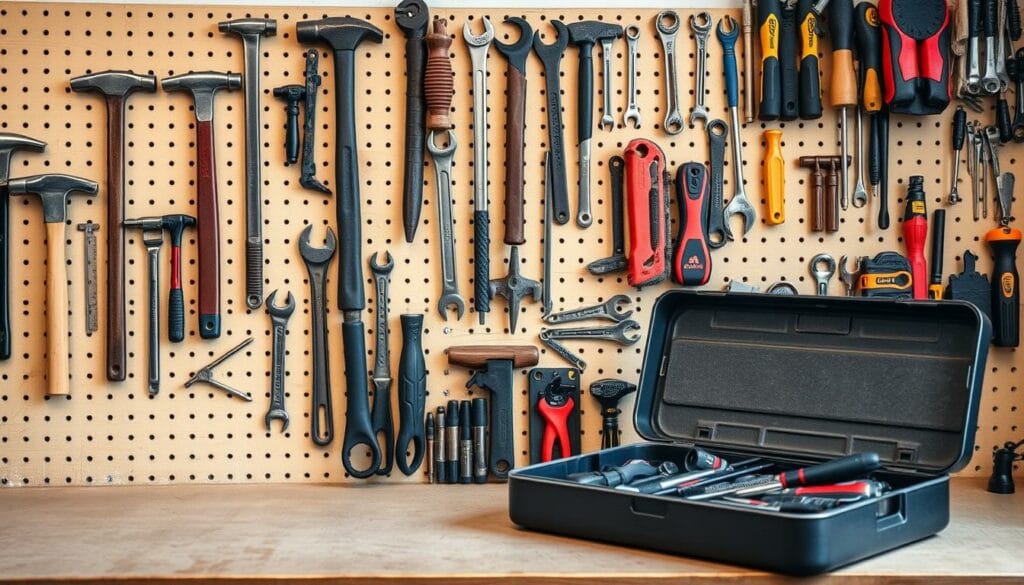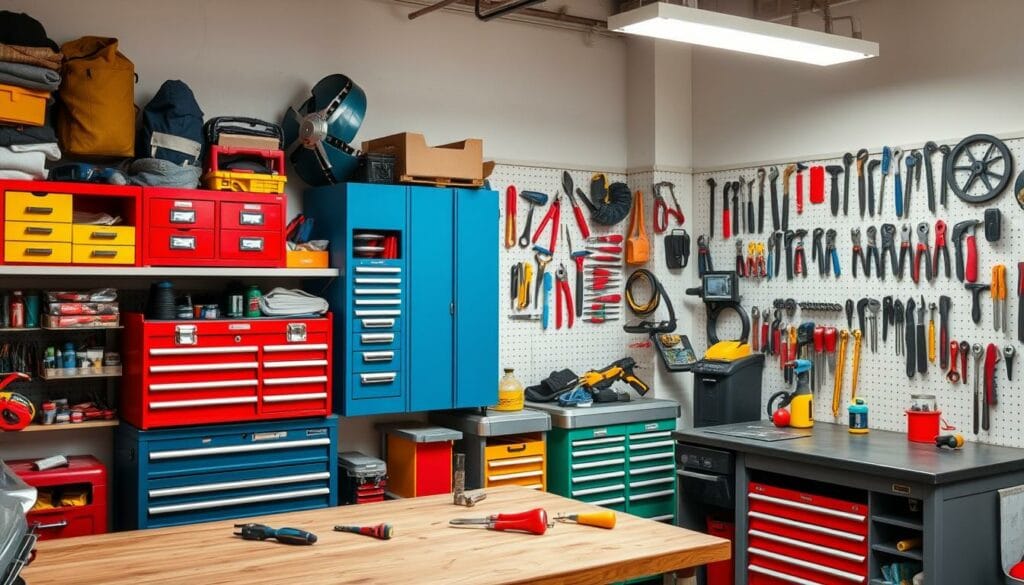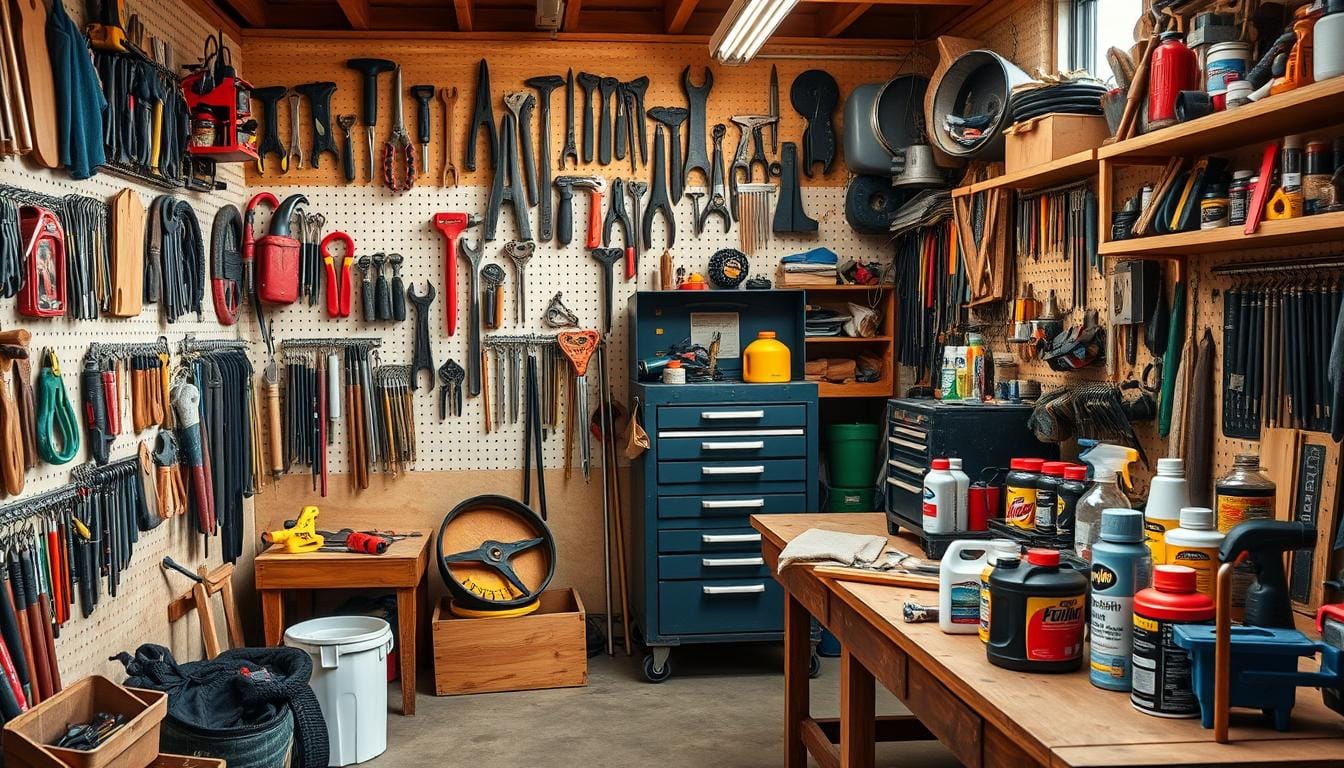Well-maintained tools are the backbone of successful projects. They power our creativity and help us bring our visions to life. Keeping tools in top condition is crucial for any DIY enthusiast or professional.
This guide will help you extend your equipment’s life and boost workspace efficiency. You’ll learn how to save money on costly replacements. These insights will change how you approach your work.
Key Takeaways
- Discover the benefits of regular tool maintenance, including enhanced performance, extended lifespan, and improved safety.
- Learn effective strategies for organizing your tools and creating a functional, efficient workspace.
- Explore best practices for cleaning, storing, and maintaining various tool types to ensure maximum longevity.
- Understand the importance of investing in quality tools and the role they play in your overall productivity and success.
- Gain insights into common maintenance mistakes to avoid and how to create a sustainable tool maintenance routine.
Get ready to unleash your tools’ full potential. We’ll explore the secrets of properly maintaining your tools. This knowledge will boost your performance and efficiency in every project.
Importance of Tool Maintenance

Maintaining your tools is vital for top performance and longevity. Proper care extends tool life and boosts workspace efficiency. Regular upkeep prevents costly repairs and ensures a safe, functional workbench.
Benefits of Regular Maintenance
Consistent tool maintenance offers many advantages for your workshop. These benefits can greatly impact your work environment.
- Improved tool performance and precision
- Reduced risk of breakdowns or malfunctions
- Longer tool lifespan, minimizing replacement costs
- Enhanced safety for you and your workspace
- Streamlined workflow and increased productivity
Tools to Help with Maintenance
Proper tool maintenance requires the right equipment. Consider these tools to keep your workshop in top shape:
- Cleaning brushes and cloths
- Lubricants and rust preventatives
- Sharpening stones or files
- Tool storage solutions (e.g., toolboxes, pegboards, or shelves)
- Diagnostic tools like multimeters or torque wrenches
Common Mistakes to Avoid
To keep tools in great condition, avoid these maintenance pitfalls:
- Neglecting regular cleaning and inspection
- Improper storage or transportation of tools
- Using the wrong lubricants or cleaning products
- Failing to sharpen or calibrate tools as needed
- Overloading or misusing tools beyond their intended purpose
Follow best practices and invest in proper maintenance tools. This will keep your workshop running smoothly. It will also extend the life of your valuable equipment.
Organizing Your Tools Efficiently

A well-organized tool collection boosts productivity in your garage or workshop. This section offers essential steps to streamline your tool organization. You’ll learn about storage solutions and workspace optimization.
Choosing the Right Storage Solutions
Proper storage solutions can transform your Tool Storage. Consider pegboards, toolboxes, and modular shelving systems for easy access. Evaluate tool size and usage frequency to pick the best storage method.
Tips for Creating a Functional Workspace
Your Garage Layout directly affects productivity. Arrange your workbench and storage units to minimize movement. Place frequently used tools within easy reach. Focus on ergonomics to create an intuitive and efficient workspace.
Labeling and Categorizing Tools
Effective Tool Inventory management begins with clear labeling. Group similar tools together for quick retrieval. This simple step can revolutionize your tool organization.
It makes maintaining a well-stocked workspace easier. You’ll save time and reduce frustration during projects.
“A place for everything, and everything in its place.” – Benjamin Franklin
These strategies will help create a harmonious workspace. You’ll streamline projects and boost overall productivity. Enjoy a more organized and efficient workshop experience.
Maintaining Your Tools Regularly
Keeping tools in top shape is vital for successful home projects. Create a routine for daily, weekly, and monthly maintenance tasks. This ensures your tools remain in prime condition for all your DIY needs.
Proper care extends the life of both hand tools and power tools. Regular attention preserves their performance and reliability over time.
Daily, Weekly, and Monthly Maintenance Tasks
Begin each day by quickly checking your tools. Wipe away dirt to prevent grime buildup that can harm their function.
Weekly, clean tools thoroughly with specialized products. Apply lubricants as needed to keep everything running smoothly.
Monthly, do a deep inspection of your tools. Look for wear and address issues before they become major problems.
How to Clean and Store Different Tool Types
Proper cleaning and storage are key to tool preservation. Wipe down hand tools and oil them regularly.
Store hand tools in a dry, organized space to prevent rust. Power tools need extra care for their motors and blades.
Clean moving parts of power tools often. Store them safely to protect sensitive electronic components from damage.
Best Practices for Tool Longevity
Good habits lead to longer-lasting tools. Clean and maintain your tools after each use.
Never put away dirty or damp tools. Invest in quality storage to keep tools protected and organized.
Replace worn parts promptly. These practices ensure your tools are always ready for your next project.
